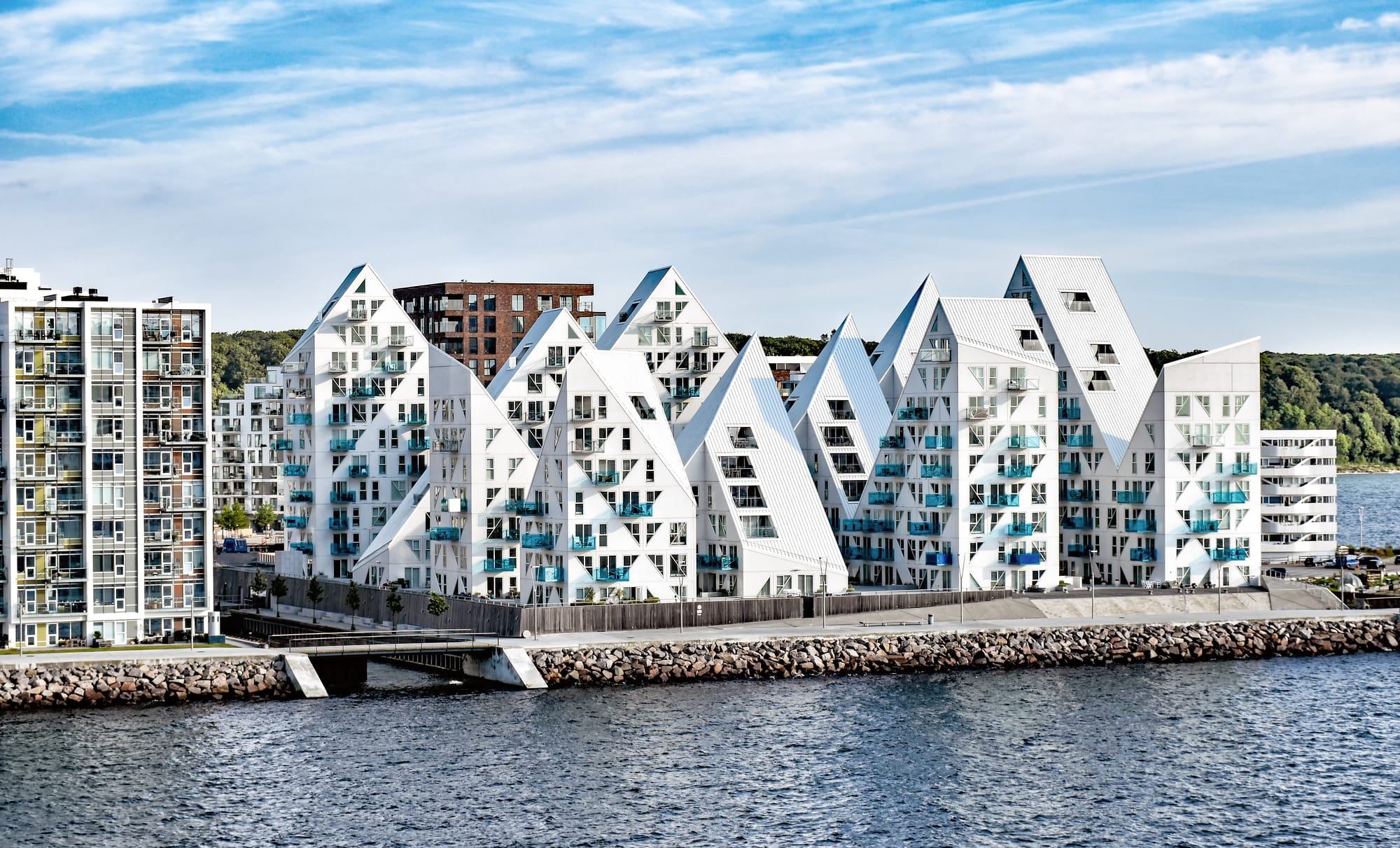Start your visit with the beautiful Aarhus Cathedral, dating from the twelfth century, an outstanding example of Danish Gothic architecture, in which the largest organ in the country is located. Nearby, the pedestrian street Strøget offers various shops and restaurants.
Further on, you will arrive at the ARoS Art Museum, an attraction to be ►
Start your visit with the beautiful Aarhus Cathedral, dating from the twelfth century, an outstanding example of Danish Gothic architecture, in which the largest organ in the country is located. Nearby, the pedestrian street Strøget offers various shops and restaurants.
Further on, you will arrive at the ARoS Art Museum, an attraction to be noticed. The building itself is a modern work of art with its famous "Rainbow Panorama" a circular walkway in the colors of the rainbow offering a 360 ° view of the city. The contemporary and classical art collection is worth visiting inside the museum. To soak up the avant-garde spirit, explore the Aarhus Ø district and admire its colorful houses as well as modern buildings. Don't miss the "Iceberg", a white, angular apartment building that evokes an icy peak.
In contrast to this modernity, Den Gamle By is an open-air museum allowing you to trace Danish history through the city's historic buildings. Let yourself be charmed by picturesque alleys with authentic cobblestones, explore traditional houses and meet artisans who perpetuate the artisanal methods of yesteryear. This immersive experience is sure to transport you back in time.
For a relaxing break, Marselisborg Park is a haven of peace. Enjoy a pleasant walk through the English gardens and let yourself be enchanted by the magnificent rose garden. The castle of the same name located in the park is the summer residence of Queen Margrethe II. The park is closed when the latter is present, but you can still attend the changing of the Royal Guard at noon.
Aarhus is considered one of the first Viking settlements in Denmark, and the Moesgård Museum bears witness to this long history. Remarkable treasures, such as the Grauballe Man, an incredibly well-preserved mummy from the third century BC, are among the many archaeological remains ranging from prehistoric times to Viking times preserved here.
Finally, the Aarhus Festival, held every year at the end of the summer for about ten days, will be an opportunity to stock up on culture. Denmark's largest arts festival brings together nearly 300,000 people yearly with a varied program, including dance performances, theatrical performances, concerts, art exhibitions and parades.
◄
